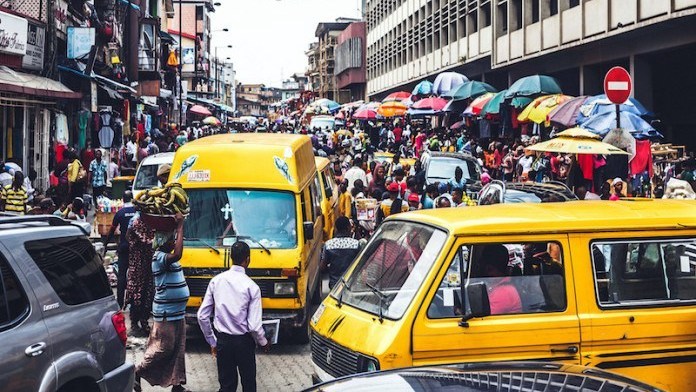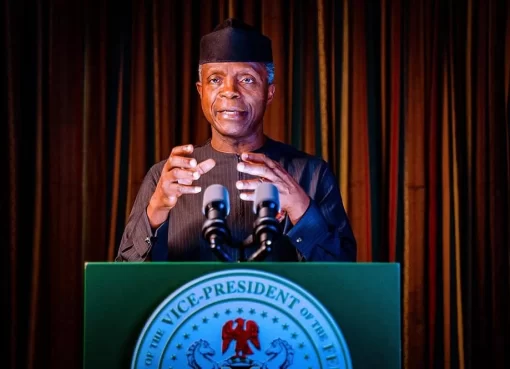• Population grows by 30 per cent in 10 years
• Economy expands by less than three per cent
• Number of severely financially distressed adults rise to 74%
If Nigeria’s economy tumbles off this current cliff the next moment, it would not happen for want of sufficient early warning signs but, perhaps, for lack of the required willpower to make necessary adjustments and damn the soothsayers.
There are, indeed, plenty and consistent red lights flashing on the dashboard of the national economy in the form of nose-diving social conditions, worsening macroeconomic indicators, falling support infrastructure, dying or existing businesses and several others, which successive administrations have dismissed, sometimes with jest.
Yesterday, again, three different data sets, including one issued by an agency of the federal government, painted a scary picture of the deteriorating condition of an average Nigerian.
Whereas the data were released by different agencies – government and non-government alike – the studies are somewhat validated by the government or its ‘affiliate’.
First, the National Bureau of Statistics (NBS) unveiled demographic data curated from the archives of the National Population Commission (NPC), showing that the country’s resident population grew by almost 30 per cent in the past 10 years, from an estimated 167 million in 2012 to 216.78 million last year.
Economic development theories demand that the economy would grow at the same speed to maintain, at least, the default living conditions of the people. Sadly, in the same period, the economic performance has been anaemic and sluggish, at best, ‘snailing’ at less than an average of three per cent, from $464 billion to $477.4 billion.
This implies that an increasing number of citizens are scrambling for fewer goods and services, a reason the country’s misery index, a measure of economic distress felt by everyday people, reached an all-time of nearly 80 points earlier this year.
Sadly, the future looks bleaker as the government has increased the total public debt from less than N10 trillion to over N80 trillion in the same period without significant investment in infrastructure, which should stimulate the growth of future revenue to ease repayment of the loan.
The underdevelopment of the economy, of course, is taking a toll on the living conditions, pushing up the bar of poverty and associated crises daily. For one, the NBS Demographics Statistics Bulletin 2022, suggests that the future generation, who should be supported well enough to pay off the piling liabilities, are being shortchanged, based on their nutritional level, education and other indicators.
According to the report, about nine out of every 10 children under five go about their daily routines without eggs. A similar proportion cannot afford dairy products, which are key sources of protein and mental growth. Also, about 60 per cent of Nigerian kids eat their foods without meat, says the survey.
Poor nutritional intake, across the globe, is a sign of over-population. With the population expected to hit 400 million in 2050, projections suggest Nigeria’s population growth has not peaked yet.
The latest NBS report also validates the bullish stance on the country’s population. For instance, at a national average of 78 per cent, non-usage of contraceptives – whether traditional or modern – is still extremely high.
Only 18.4 per cent have adopted the globally-certified modern techniques of family planning, which implies a robust path to population growth and a sign the pressure on scarce resources is not slowing in the short to medium term.
For countries like India that have been able to turn their huge population into a demographic dividend, large populations are considered a blessing. But for a country that sits at the bottom of local capacity utilisation, infrastructure funding and social investment, a rising population could be a nightmare.
Nigerian joblessness stood at 33.3 per cent until the most recent survey, which experts dismissed as flawed, put the figure at 4.1 per cent. The more believable figure underpins the burden of population growth on the few employed citizens. And the referenced NBS report puts the official active population (25 to 64 years) at 36 per cent, that is, a dependency ratio of close to 2:1.
The World Bank also released its first post-reform Nigeria Development Update (NDU). The report scored the country high on readiness to embrace economic reforms but warned of dire consequences if the ongoing exercises, including fuel subsidy removal, are aborted.
The report, tagged, ‘Turning the corner: From reforms and renewed hope to results’, admitted that the country has started the long-awaited reforms but saw the likelihood of regress, which could wipe the moderate gains recorded and spike a more disastrous economic outcome for the country with debt service to revenue ratio climbing from 101.5 per cent last year to 236 per cent by 2026.
The bank had last year painted reform-or-die scenarios and warned that the debt service to revenue ratio would balloon to 160 per cent by 2027 unless the government adopts radical reforms such as subsidy and market-led foreign exchange reform.
The World Bank, in its International Debt Report, a different statement released yesterday, shared concern about the impact of huge debt service on developing countries, including Nigeria, saying they have a record $443.5 billion to service their external public and publicly guaranteed debt in 2022.
The increase in costs shifted scarce resources away from critical needs such as health, education and the environme nt, the bank said.
Debt service payment, which includes principal and interest, increased by five per cent last year across all developing countries.
For Nigeria, the government intends to spend N8.25 trillion or 30 per cent of the projected total expenditure to service debt, with dire consequences for social services. The amount is only about five per cent higher than the estimated N8.7 trillion capital expenditure. But the challenge of capital expenditure, the only part of the budget that benefits the broader populace, is more about its misuse than its lean size.
Each time there is a revenue shock, the government dips its hand in the capital votes to meet its obligations to debtors and civil servants at the expense of infrastructure and social spending. The running budget is an example of how the capital budget underperforms at the expense of other components of the expenditure. The amount released for capital projects in the first three quarters, for instance, was less than one-third of the pro rata N4.73 trillion estimates for the period.
On the other hand, the actual cost of debt service was about N1 trillion higher than the pro rata N4.8 trillion earmarked for the government’s external and domestic debt holders.
Also, the NDU is worried about the unresolved ways and means (W&M) financing. Whereas N22.7 trillion was restructured at the twilight of ex-President Muhammadu Buhari’s administration, the Bank said the figure soared to N26 trillion or 11.1 per cent of this year’s estimated output value as at May when the administration ended its eight-year reign with nothing done about over un-restructured N3 trillion.
The bank canvassed long-term structural reforms, which it said would guarantee poverty reduction and more sustainable growth, noting “the economic outlook for Nigeria in the short to medium term hinges on the continuation and effectiveness of its macroeconomic stabilization agenda”.
“Successful implementation of the initiated reforms will be the first step toward improving Nigeria’s growth prospects. With the implementation of these first macroeconomic stabilization reforms, the economy is expected to grow at an average annual rate of 3.5 percent during 2023–2026, or 0.5 of a percentage point higher than in a scenario in which the reforms had not been implemented. Services, especially banking and ICT, together with industry will benefit from a more stable and predictable macroeconomic environment and easier access to FX and imported inputs,” the World Bank noted.
Another report, Enhancing Financial Innovation and Access (EFInA) 2023 Access to Financial Services (A2F) Survey, also noted daunting challenges before Nigeria in its efforts to break through the ceiling of inclusive growth.
The report released at an event attended by top officials of the Central Bank said about 85 per cent of adults currently battling liquidity challenges or cannot cover their monthly expenses from retained incomes. The proportion rose from 72 per cent in 2020. Severely financially distressed adults also rose from 62 per cent in 2020 to 74 per cent this year.
Unlike previously when a larger proportion of the population lived in rural areas, the survey validated that there is a shift in favour of urban (55 against 45 per cent), a trend that could increase the pressure on infrastructure in urban centres and reduce the number of people involved in agriculture activities.
THEGUARDIAN






